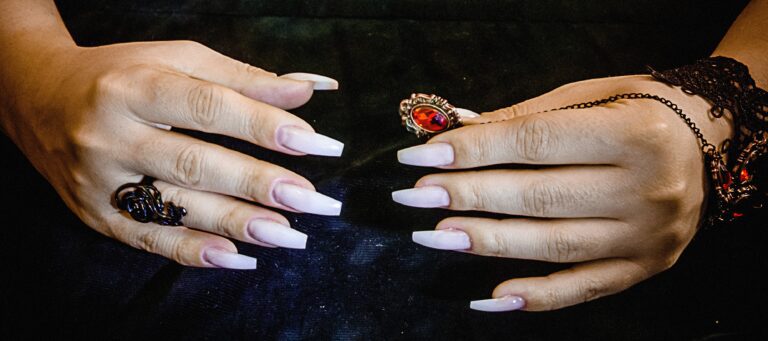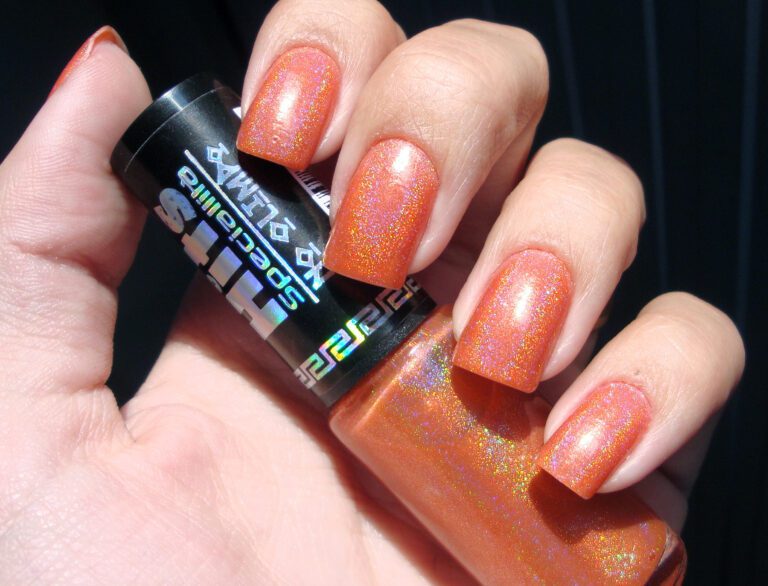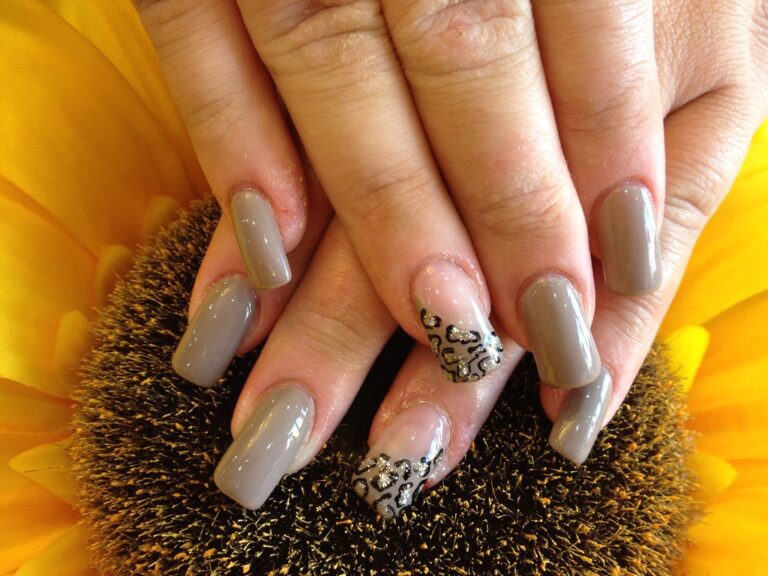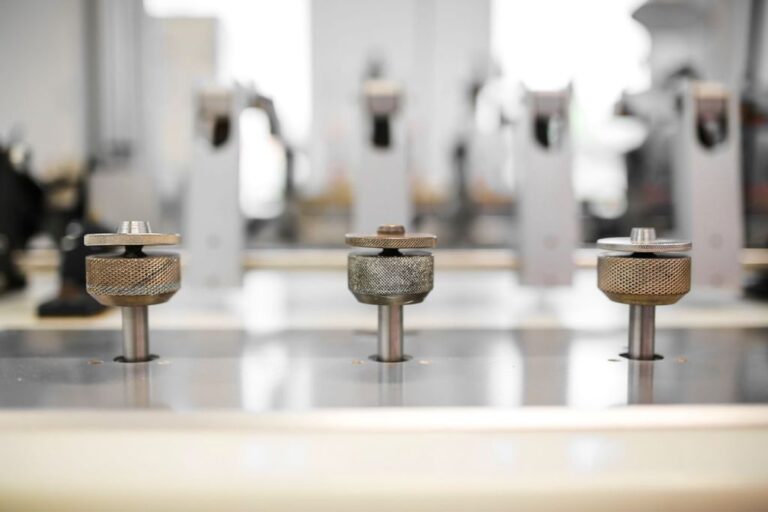“Yellow Peril: The Truth About Yellowing Nails”
Yellowing of the nails can be a cause of concern for many individuals, as it may indicate underlying health issues or lifestyle factors. Understanding the causes and implications of yellow nails is crucial for maintaining nail health and overall well-being. In this article, we will explore the various factors that contribute to yellowing nails and discuss preventive measures and treatment options for this common condition.
Key Takeaways
- Yellowing of the nails can be caused by lifestyle choices, fungal infections, nail polish staining, and underlying health conditions.
- Smoking and chemical exposure can lead to nail discoloration, highlighting the importance of minimizing exposure to harmful substances.
- Nutritional deficiencies, particularly in vitamins and minerals, can impact nail color and integrity, emphasizing the role of a balanced diet in maintaining healthy nails.
- Medical conditions such as yellow nail syndrome, thyroid diseases, and liver health can manifest in nail changes, necessitating medical attention for proper diagnosis and treatment.
- Preventive measures such as quitting smoking, making dietary adjustments, and practicing protective nail care can help maintain nail vitality and prevent yellowing, promoting overall nail health.
Unveiling the Causes of Yellow Nails

The Impact of Lifestyle Choices
Our daily habits and choices can have a significant impact on the health and appearance of our nails. Factors such as personal hygiene, diet, and even the way we care for our nails can lead to discoloration and damage. For instance, frequent hand washing or the use of harsh cleaning chemicals without protective gloves can strip nails of their natural oils, leading to brittleness and yellowing.
Smoking is another lifestyle choice that greatly affects nail health. The nicotine and tar found in cigarettes can stain nails and cuticles, leaving a persistent yellow hue. Moreover, a diet lacking in essential nutrients can deprive nails of the necessary building blocks for strength and clarity.
Tip: To maintain nail health, consider wearing gloves when using cleaning products and avoid excessive exposure to water.
Here are some common lifestyle factors that contribute to yellowing nails:
- Use of tobacco products
- Frequent use of nail polish without a protective base coat
- Exposure to staining substances (e.g., turmeric, hair dyes)
- Poor dietary habits
By addressing these lifestyle factors, individuals can take proactive steps to prevent nail yellowing and promote overall nail health.
Fungal Infections: A Common Culprit
Fungal infections are a prevalent reason for yellowing nails, often leading to discoloration, thickening, and brittleness. The condition, known as onychomycosis, thrives in warm, moist environments, making it a frequent issue for individuals who wear closed shoes regularly or those who frequent communal showers.
- Discoloration: The nail may turn various shades of yellow to brown.
- Thickening: Over time, the nail can become thicker, making it difficult to trim.
- Brittleness: Infected nails may crumble or split easily.
Tip: Keeping feet dry and clean is essential in preventing fungal infections. Choose breathable footwear and change socks regularly to reduce moisture.
If left untreated, a fungal infection can cause pain and discomfort, and in severe cases, it may lead to more serious complications. It’s important to address the symptoms early and consider over-the-counter antifungal treatments or seek professional medical advice.
Nail Polish Staining: The Cosmetic Consequence
Nail polish staining is a common concern among individuals who frequently indulge in nail color application. The pigments present in nail polish, particularly darker shades, can seep into the nail plate, leading to discoloration over time. This can result in the development of yellowish hues on the nails, affecting their aesthetic appearance. It’s important to note that the frequency of nail polish application and the use of low-quality products can exacerbate this issue. To mitigate the risk of staining, consider using a protective base coat before applying nail polish to create a barrier between the nail plate and the pigmented polish. Additionally, opting for high-quality, non-toxic nail polish formulations can help minimize the likelihood of discoloration.
Tip: Prioritize the use of protective base coats and high-quality nail polish to safeguard your nails from staining and discoloration.
Underlying Health Conditions
Yellowing of the nails can be an indication of underlying health conditions such as fungal infections, liver disorders, and respiratory illnesses. These conditions can disrupt the normal growth and color of the nails, leading to the characteristic yellow discoloration. It’s important to address these underlying health issues to effectively treat yellow nails and restore nail health. Additionally, maintaining good nail hygiene and seeking professional advice can aid in managing and preventing yellowing of the nails.
The Connection Between Smoking and Nail Discoloration

Chemical Exposure and Its Effects
The discoloration of nails can often be traced back to chemical exposure, particularly in individuals who smoke. The tar and nicotine found in cigarettes are known to permeate the nail plate, leading to a yellowish hue over time. This staining is not merely a surface issue but can become deeply ingrained in the nail’s structure.
Chemicals are not exclusive to cigarette smoke; they are also prevalent in various beauty and cleaning products. For instance, nail polish removers containing acetone can strip the nails of their natural oils, contributing to both discoloration and brittleness. Similarly, frequent contact with cleaning agents can have a deleterious effect on nail health.
Tip: To minimize chemical exposure, consider wearing gloves when using cleaning products and opt for acetone-free nail polish removers.
It’s important to recognize that the effects of chemicals on nails are cumulative. Prolonged exposure can exacerbate the yellowing and weaken the nail structure, making it more susceptible to damage and infection.
Long-Term Impact of Nicotine on Nails
The long-term exposure to nicotine from smoking can have a profound effect on nail health. Over time, the nicotine and other chemicals in cigarettes can lead to a persistent yellow or brownish discoloration. This is not merely a cosmetic issue; it reflects the deeper damage being done to the nail bed and the blood vessels that nourish it.
- Reduced blood circulation* is a significant consequence of smoking, which deprives nails of the essential nutrients and oxygen they require for healthy growth. As a result, smokers may notice their nails becoming more brittle and prone to breaking.
- Discoloration: Yellow/brownish tint
- Texture Changes: Increased brittleness
- Growth: Slower nail growth
Tip: To mitigate the impact of nicotine on nails, consider using a nail whitening scrub or soak. However, the most effective measure is to quit smoking altogether.
Nutritional Deficiencies and Nail Health

The Role of Vitamins in Nail Color
Vitamins play a crucial role in maintaining the health and appearance of nails. Deficiencies in certain vitamins can lead to discoloration and yellowing. For instance, Vitamin B12 is essential for preventing anemia, which can cause a pale or yellowish hue to the nails. Similarly, Vitamin C is important for collagen production, and a lack of it can result in brittle, discolored nails.
Essential vitamins for nail health include:
- Vitamin A: Promotes nail growth and strength.
- Vitamin C: Necessary for collagen production and repair.
- Vitamin E: Provides antioxidant properties and improves circulation.
- B Vitamins: Aid in cell growth and the prevention of discoloration.
Tip: A balanced diet rich in these vitamins can help maintain the natural color and strength of your nails. Supplements should only be considered if dietary intake is insufficient and with a healthcare provider’s advice.
Minerals and Their Influence on Nail Integrity
Minerals are the unsung heroes when it comes to maintaining the health and appearance of nails. Iron and zinc, in particular, are pivotal for nail strength and color. Iron is crucial for oxygen transport in the blood, which in turn is essential for nail growth and repair. A deficiency in iron can lead to brittle nails and even cause them to assume a concave shape or develop ridges.
Zinc plays a significant role in protein synthesis and cell division, which are vital processes for nail development. Without adequate zinc, one might notice white spots on their nails or experience slower growth rates. Here’s a quick overview of how these minerals affect nail health:
- Iron: Prevents brittleness and abnormal shapes
- Zinc: Aids in protein synthesis and prevents white spots
Remember, a balanced diet is key to providing your nails with the minerals they need. If you suspect a mineral deficiency is affecting your nails, it’s advisable to consult with a healthcare provider for proper diagnosis and treatment options.
Medical Conditions Linked to Yellow Nails

Yellow Nail Syndrome: A Rare Disorder
Yellow Nail Syndrome is a rare disorder characterized by the triad of yellow, thickened nails, respiratory issues, and lymphatic system abnormalities. This condition is often associated with respiratory manifestations and lower limb swelling. While the etiology of Yellow Nail Syndrome remains a mystery, its distinct clinical features make it a subject of ongoing research and medical interest. Patients with Yellow Nail Syndrome may experience a range of symptoms, including nail discoloration, chronic cough, and lymphedema. The management of this condition typically involves addressing the underlying respiratory and lymphatic issues, along with specialized nail care to maintain nail health and integrity. It’s important for individuals with yellow nails and respiratory symptoms to seek medical evaluation to determine the appropriate course of action for their specific condition.
Thyroid Diseases and Nail Changes
Thyroid diseases can have a significant impact on nail health. Changes in the thyroid hormone levels can lead to brittle, dry, and thick nails with ridges. Additionally, thyroid problems may cause changes in the rate of nail growth and the appearance of the fingertips. It’s important to be aware of these potential signs and consult a healthcare professional if you notice any unusual changes in your nails. Roughly 90% of patients with thyroid problems report issues with their nails, highlighting the close connection between thyroid health and nail conditions.
The Significance of Liver Health
The liver, often referred to as the body’s chemical processing plant, is integral to purifying the blood of impurities, including substances that can cause nail discoloration. When the liver is compromised, its ability to filter out toxins is diminished, which can lead to a buildup of substances in the body that may manifest as yellowing of the nails.
One of the telltale signs of liver issues is a change in nail coloration, specifically the appearance of Terry’s nails—a condition where the nails take on a stark white appearance with a narrow band of yellow at the tip. While not all cases of yellow nails are due to liver health, it is a significant indicator that should not be ignored.
Tip: If you notice a persistent change in the color of your nails, it’s advisable to consult a healthcare professional to rule out liver-related health concerns.
Maintaining liver health is crucial not only for the appearance of your nails but also for overall well-being. Lifestyle choices such as moderate alcohol consumption, a balanced diet, and regular exercise can support liver function and prevent the yellowing of nails associated with liver conditions.
Preventive Measures and Lifestyle Modifications

Quitting Smoking: A Step Towards Healthier Nails
The decision to quit smoking is a pivotal one for overall health, and it also offers specific benefits for nail health. Nicotine and other chemicals found in cigarettes can lead to the yellowing of nails over time. By eliminating these toxins from your system, you can gradually restore the natural color and vitality of your nails.
- Improved circulation and increased oxygen supply to the extremities
- Reduction in the buildup of harmful substances that can discolor nails
- Enhanced ability to fight off nail infections and improve overall nail health
Tip: While the process of quitting smoking can be challenging, the benefits to your nail health begin to manifest quite quickly. Within weeks, you may notice a significant reduction in yellowing and an improvement in nail strength.
Remember, the journey to healthier nails after quitting smoking is gradual. Patience and consistent care are key to seeing the full benefits. If you’re struggling to quit, consider seeking support from smoking cessation programs or healthcare professionals.
Dietary Adjustments for Nail Vitality
The health of your nails is significantly influenced by your dietary choices. A balanced diet rich in essential nutrients can help prevent yellowing and maintain nail vitality. For instance, incorporating foods like eggs, nuts, and leafy greens can contribute to stronger, healthier nails. These foods are packed with vitamins and minerals that are crucial for nail health, such as biotin, iron, and zinc.
Hydration is another key factor; ensuring you drink enough water throughout the day can help keep your nails hydrated and less prone to discoloration. It’s also beneficial to consider the timing of nutrient intake. Vitamins, for example, may be more effective when taken at certain times, so adjusting your schedule to optimize absorption could be advantageous.
Tip: Pay attention to how your body responds to dietary changes. If you notice improvements in your nail health, continue to incorporate those beneficial foods into your diet.
Remember, while dietary adjustments can have a positive impact on nail health, they should be part of a comprehensive approach to nail care, including proper hygiene and avoidance of harsh chemicals.
Protective Practices for Nail Care
When it comes to protective practices for nail care, it’s essential to prioritize gentle handling and proper maintenance. Avoiding harmful nail practices, such as biting your nails or picking at your cuticles, is crucial to prevent infections and maintain nail strength. Regularly washing nail clippers, files, and other tools with soap and water, and sanitizing them with rubbing alcohol or appropriate disinfectants is also important for maintaining nail health. Additionally, trimming nails after taking a bath or shower when they are softer makes the process easier. Using a nail clipper or nail scissors for trimming nails is recommended. Hydrated nails are less likely to break, so using a nourishing cuticle oil and hand cream to keep nails and surrounding skin moisturized is a key protective practice. Remember, gentle care and proper maintenance are the foundation of healthy nails.
Treatment Options for Yellowing Nails

Over-the-Counter Remedies
When considering over-the-counter remedies for yellowing nails, it’s essential to look for products that target the root cause of discoloration. These treatments often contain powerful antifungal agents such as clotrimazole, tolnaftate, and undecylenic acid to combat nail fungus effectively. Additionally, eucalyptus oil has been recommended as a simple yet efficacious over-the-counter toenail fungus treatment. It’s important to consult a healthcare professional before trying any OTC products, especially if you have underlying health conditions. Always follow the instructions provided with the product and monitor your nails for any adverse reactions. Remember, consistency is key when using over-the-counter remedies for nail discoloration.
When to Seek Professional Help
If you notice persistent discoloration or changes in the texture of your nails, especially if they begin lifting from the nail bed, it’s crucial to seek medical advice. This could be a sign of a fungal infection or an underlying health condition. Additionally, if over-the-counter remedies and home treatments have not shown improvement after a reasonable period, consulting a healthcare professional is recommended. Remember, early intervention can prevent further damage and promote nail health. Your nails are a reflection of your overall health, so it’s important to address any concerning changes promptly.
Home Remedies: Do They Work?
The allure of home remedies for yellowing nails often lies in their accessibility and the perception of a natural, chemical-free approach. However, the effectiveness of such treatments can vary widely.
Common home remedies include the application of various oils and solutions, such as tea tree oil, known for its antifungal properties. While some individuals report success with these methods, scientific evidence supporting their universal efficacy is limited. It’s crucial to approach these remedies with caution, as improper use can sometimes exacerbate the problem.
Tip: Before trying any home remedy, it’s advisable to conduct a patch test to ensure you don’t have an allergic reaction.
For those considering the DIY route, here’s a list of popular home remedies:
- Tea tree oil application
- Vinegar soaks
- Lemon juice rubs
- Baking soda pastes
Remember, while these remedies may offer temporary relief or improvement, they are not a substitute for professional medical advice or treatment. If your nail discoloration persists or worsens, it’s important to consult a healthcare provider.
Yellowing nails can be a common and unsightly problem for many people. Fortunately, there are several treatment options available to address this issue. From topical treatments to dietary changes, finding the right solution for yellowing nails can help restore their natural beauty. If you’re looking for expert advice and inspiration for nail care and design, visit NAILinspire.com today and discover the ultimate online nail art design library.
Frequently Asked Questions
What are the common causes of yellow nails?
Yellow nails can be caused by lifestyle choices, fungal infections, nail polish staining, and underlying health conditions.
Is smoking linked to nail discoloration?
Yes, smoking and chemical exposure can lead to yellowing of the nails, and nicotine has long-term effects on nail health.
How do nutritional deficiencies affect nail color?
Nutritional deficiencies, especially in vitamins and minerals, can impact nail color and integrity.
What medical conditions are associated with yellow nails?
Yellow nail syndrome, thyroid diseases, and liver health can all contribute to yellowing of the nails.
What preventive measures can help maintain healthy nails?
Quitting smoking, making dietary adjustments, and practicing protective nail care can help prevent yellowing of the nails.
What are the treatment options for yellowing nails?
Over-the-counter remedies, seeking professional help, and exploring home remedies are all potential treatment options for yellowing nails.






